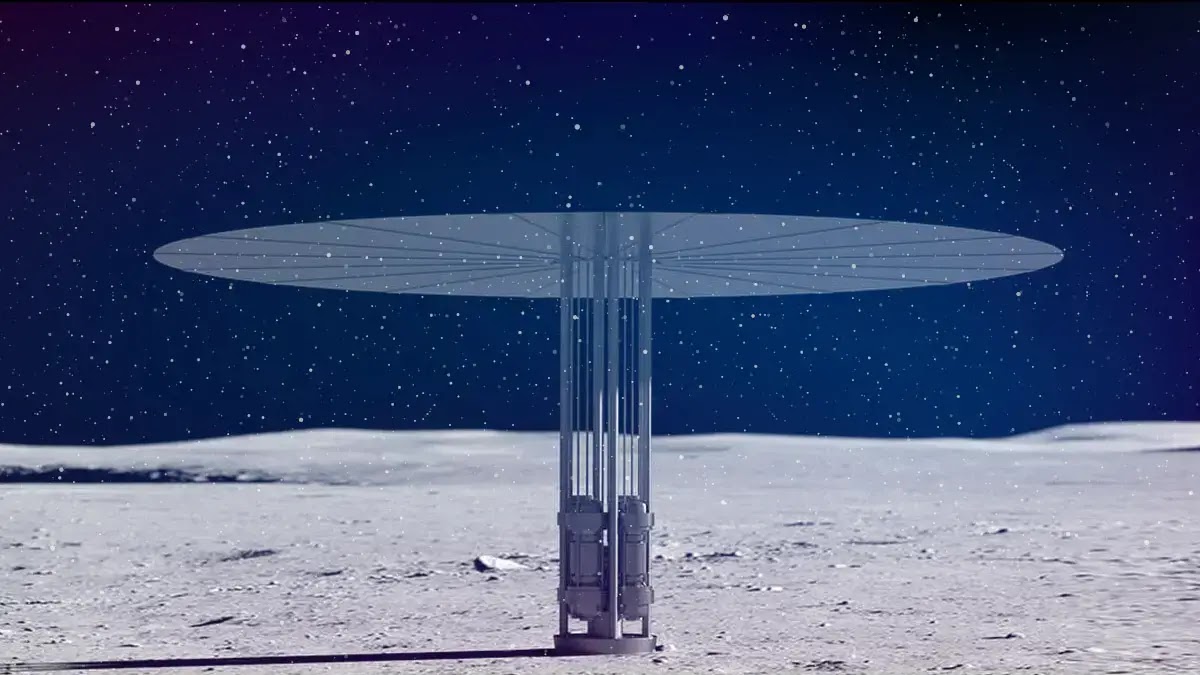In pursuit of this objective, NASA initiated the Fission Surface Power Project. The essence of this project revolves around conceptualizing a compact nuclear fission reactor to generate electricity on the moon.
NASA has announced plans to put a nuclear reactor on the moon by 2030 as part of a vision to turn the lunar body into an orbiting fuel station. The vision is depicted in the image above. Credit: NASA
The project recently concluded its initial phase, which commenced in 2022. This phase entailed awarding three contracts worth $5 million each to commercial partners tasked with developing fission reactor designs. Lockheed Martin in Bethesda, MD, Westinghouse of Cranberry, PA, and IX of Houston, TX were chosen by NASA for a 12-month Phase 1 award to advance preliminary designs.
Each partner was assigned the responsibility of
presenting a reactor design along with systems for power conversion, heat
rejection, and power management and distribution.
Furthermore, the partners were required to furnish
estimated costs for their systems and delineate development plans. The
overarching goal was to devise a system capable of sustaining lunar bases for a
decade, while also serving as a blueprint for constructing similar systems on
Mars.
The significance of power systems cannot be overstated; they are the linchpin differentiating success from failure in any mission. Particularly for the Moon and Mars, power systems represent the dichotomy between life and death. Nuclear power emerges as the most viable option to cater to long-term power requirements.
Trudy Kortes, program director of Technology Demonstration Missions within NASA’s Space Technology Mission Directorate, asserted, “A demonstration of a nuclear power source on the Moon is required to show that it is a safe, clean, reliable option.”
She further emphasized the technical challenges
posed by the lunar night and highlighted the imperative of a power source, such
as a nuclear reactor, that operates independently of solar influence, thereby
facilitating sustained exploration and scientific endeavors on the Moon.
The choice of fission reactors is rooted in the myriad challenges inherent to living and working on the Moon. Safe and clean power is instrumental in mitigating the risks encountered by lunar explorers. While solar power serves as a dependable energy source, its efficacy diminishes during the lunar night, which spans approximately 14 days.
Nuclear reactors offer a viable alternative, capable of functioning uninterrupted regardless of sunlight availability. This resilience is particularly advantageous during the lunar night when solar power grids are rendered ineffective. Additionally, nuclear reactors can be strategically positioned in areas experiencing partial or complete shadow, often coinciding with regions housing ice reservoirs.
It’s crucial to note that NASA envisages a hybrid
approach, wherein both solar and nuclear installations coalesce to meet electricity
demands for habitats and scientific endeavors.
The specifications outlined for reactor designs stipulate longevity of at least a decade without human intervention. This design criterion aims to mitigate risks associated with accidental radiation exposure and empower lunar explorers to concentrate on primary scientific and exploratory pursuits.
The prescribed reactor specifications mandate a weight under six metric tons, capable of producing 40 kilowatts of power. This output is deemed adequate to validate system capability and cater to the energy needs of habitats, grids, and scientific experiments. To contextualize, the same reactor deployed on Earth would suffice to power 33 homes in a typical neighborhood.
NASA deliberately crafted flexible requirements to
stimulate innovation among participating companies, encouraging them to explore
unconventional design paradigms.
With invaluable insights garnered from commercial
partners, NASA embarks on formulating a Phase 2 solicitation slated for 2025.
Subsequently, the agency anticipates the delivery of a deployable system for
lunar utilization in the early 2030s. Looking ahead, NASA envisions adapting
nuclear fission reactor technology for Martian exploration following their
validation on the lunar surface.





0 Comments